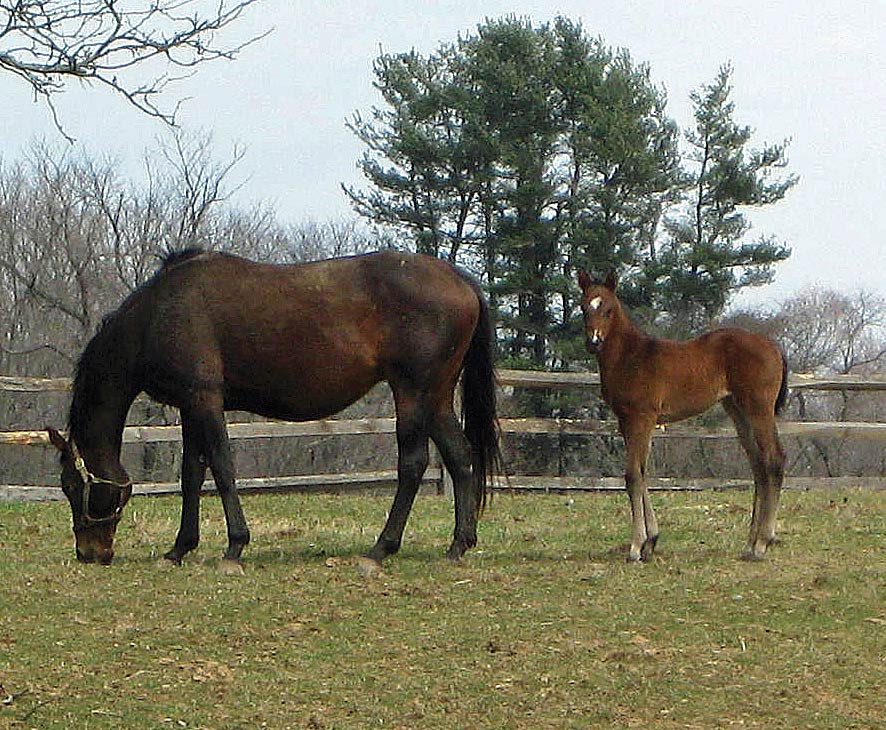
“Everyone talks about the weather,” American essayist Charles Dudley Warner said, “but nobody does anything about it.” Indeed. As the summer of 2024 recedes into memory, many people may forget that it was the hottest summer ever recorded in National Oceanic and Atmospheric Administration’s (NOAA) history.
Everyone was hot. The beaches and pools were crowded with hot people. But all that heat represented more than an inconvenience, or an excuse to plunge into the nearest pool. On farms throughout the region, the heat—coupled with periods of drought—affected the growth of everything from alfalfa to corn to soybeans. Soon, people buying hay for their horses or grain for feed, will remember those hot dry days of summer 2024, and realize that record heat and intermittent drought add up to higher prices.
Peter Hicks, whose family owns and operates Hicks Hay Company in Kennett Square, PA, says that it’s likely the supply of hay will suffer from the summer’s extreme weather. “They’re going to have less hay,” he says, noting that the problems are not strictly related to hay. Typically, a farmer will have two or even three cuttings of hay in a year. “The second cutting didn’t grow back that well,” Hicks says. “People are starting to feed hay sooner due to not enough pasture.”
He says that early in October there was a lot of rain in his area, and some of the crops that were planted then are doing well; but hay that was planted before the rain is not doing well. “It gets to the point where it gets this dry and the hay and crops do not have enough moisture to germinate the seed.” Looking ahead, he sees some trouble spots for horse farms. “It’s hard on the pastures. There won’t be a lot of pasture growth going into the winter.”
Ron Hoover, who coordinates Penn State Extension’s On-Farm Research Program, recently described the ramifications for farmers of summer’s weather. He explained that the prolonged heat and dry conditions caused heat stress for a lot of the grasses. “They don’t like it when it’s 90-plus degrees, and couple that with limited water for transpiration and it makes it even more stressful. These grasses are just like our lawns, and they shut down when it gets this hot.”
Julie Schrum, District 8 Director of the Pennsylvania Farm Bureau, says that farming is inherently unpredictable. “One minute you’re praying for rain and the next minute you’re praying for it to stop.” She says this year was especially “bizarre,” noting that an Amish farmer told her the dry weather was “phenomenal for tobacco,” not so much for other crops. Schrum’s district includes Dauphin, Lebanon, Lancaster and York counties.
Looking ahead, Schrum says other issues, along with reduced yields, will affect farmers. “Prices of inputs (seed, fertilizer, etc.) are not dropping. Some seed prices have stayed the same, while others have gone up.”
Lancaster Farming reported on the problems hay farmers have been facing. Early spring rainfall helped produce a robust first cutting of hay. But after that, farms in Pennsylvania, Maryland and eastern Ohio were hit with extremely hot and dry conditions. Reporter Tom Venesky interviewed Donald Gott, a farmer in southern Maryland, whose orchardgrass and alfalfa yields were cut drastically by the extreme heat. In that interview Gott said his fields typically produce around 1,600 small square bales of second cutting alfalfa, but this year the number dropped to 300. The second cutting of orchardgrass hasn’t even happened yet, and it’s at least a month behind. Gott sometimes gets four cuttings of orchardgrass each year, but this year he’ll be lucky to get three.
Back in Kennett Square, Peter Hicks expects things to get more expensive. “I would think the price is going up once you get to December, January, February, just because with the timothy and alfalfa the quality is not there.” He laughs at the suggestion that farmers depend on predictability. “Farming is not predictable. You have to go out there with that mindset. You have to set some goals and know where your breakevens are.”
Penn State’s Extension service enumerates the challenges farmers faced this year, from a mild winter to unseasonable warmth in early spring. “Then, an extended period of cool and wet, delayed planting, and one of the worst years for slugs in memory. Then, drought paired with multiple weeks of extreme heat through July. Then a tropical storm, and more drought in August.”
That famous curse “may you live in interesting times,” has rarely had a more precise explanation.




